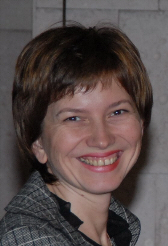FORECASTING THE BEHAVIOUR OF SPORTSMEN BY ESTIMATING THE MOTIVATIONAL MODEL OF PEOPLE WITH VARIOUS PERSONALITY STRUCTURE
Аннотация
Ключевые слова
Литература
Atkinson, J.W. Introduction to motivation/J.W. Atkinson. -N.-Y.: Princeton, 1964. 360 р.
Briggs Myers I., McCaulley M. Manual: A Guide to the Development and Use of the Myers-Briggs Type Indicator/Myers I. Briggs, M. McCaulley. -Palo Alto: Consulting psychologists Press, Inc., 1985. 309 p.
Cattell, R.B. Structured personality learning theory/R.B. Cattell. -New York: Praeger, 1983.
Gardner, H. (1998). Are there additional intelligences? The case for naturalist, spiritual, and existential intelligences. In J. Kaue (Ed.), Education, information, and transformation. Upper Saddle River, NJ: Prentice Hall.
Maslow, A.H. Motivation and personality (2 nd ed.). -New York: Happer and Row.
McClelland, D.C. Toward a theory of motive acquisition/D.C. Mc-Clelland//American psychologist. 1965. Vol. 20. Р. 97-99.
Murray, E.J. Explorations in personality/E.J. Murray. -N.-Y., 1938.
Инновационная модель структуры личности/А.А. Полозов/«Маркетинг i менеджмент iнновацiй» 2013. №1.
Мясищев, В.Н. Проблема потребностей в системе психологии/В.Н. Мясищев//Ученые записки ЛГУ. 1957. Вып. 11. № 224. С. 3-23.
Мясищев, В.Н. Психические состояния и отношения человека/В.Н. Мясищев//Обозрение психиатрии и медицинской психологии им. В.М. Бехтерева. 1966. № 1-2. С. 8-14.
DOI: https://doi.org/10.12731/wsd-2014-9-20
Ссылки
- На текущий момент ссылки отсутствуют.
(c) 2016 В мире научных открытий
ISSN 2658-6649 (print)
ISSN 2658-6657 (online)






